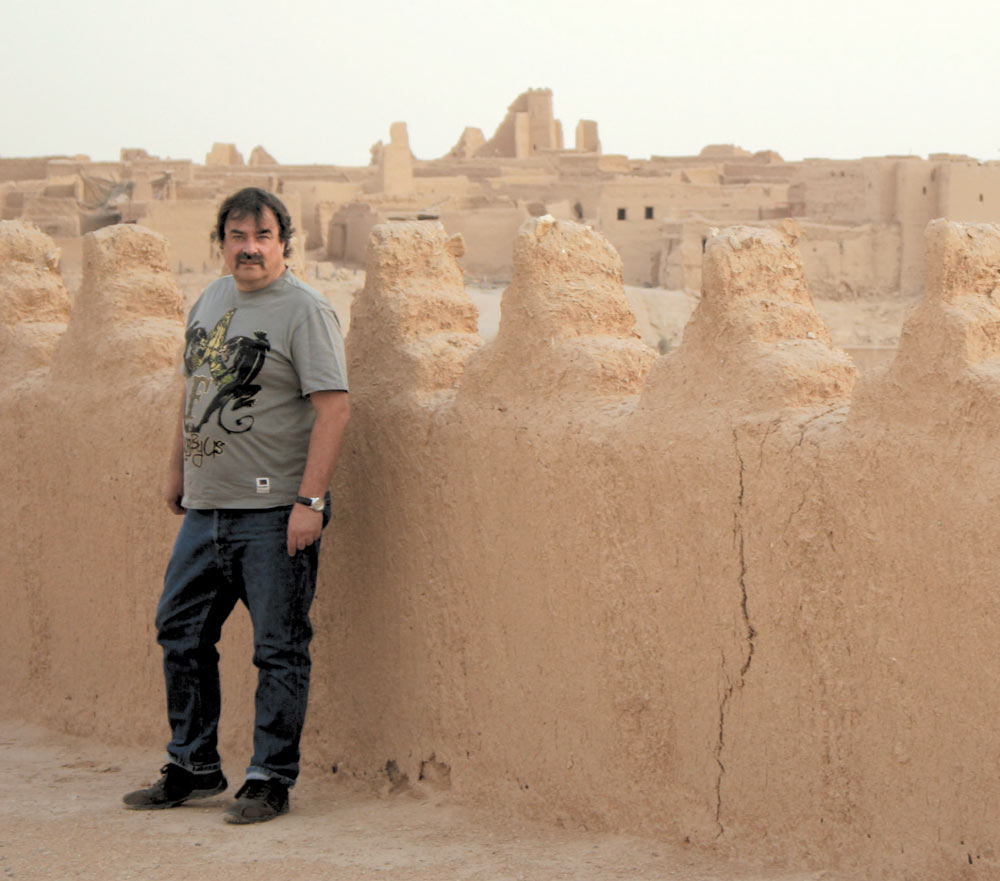Professor Nigel Bennett, who is also a Visiting Professor at the King Saud University, with his colleagues Professors Abdulaziz Alagaili and Osama Mohammed, has been investigating various aspects of the physiology of both large and small mammals with the specific aim to investigate how they manage to survive in some of the most extreme dry deserts of Saudi Arabia.
The team have investigated the reproductive biology of the Baluchistan gerbil, the Arabian spiny mouse and the desert hedgehog. Amazingly among these phylogenetically diverse organisms there is a golden thread that links how reproduction is played out in the desert. In males the resurgence of testes growth, spermatogenesis and heightened testosterone concentrations are triggered by rainfall (spring to summer), whereas in the females it is the onset of the restricted rainfall pattern as well as temperature increase (spring to summer) that triggers follicular genesis, ovulation and the subsequent rise in progesterone concentrations. These environmental triggers ensure that young are born at a time that is optimal for the survival of the offspring.
Professor Bennett and his colleagues have established a custom-built temperature- and light-controlled room in Riyadh to investigate the role of the light/dark cycle on the locomotory activity patterns of a number of small rodents including the King jird, the Libyan jird, Yemeni gerbil and Asian dormouse found in the more mountainous western parts of Saudi Arabia. The findings have revealed that activity is restricted to the dark phase of the light/dark cycle. Indeed, under constant dark conditions it is found that the animals still express a distinct innate rhythm of locomotory activity that mirrors that of the pattern on the light/dark cycle, showing that these rodents have endogenous rhythms of locomotory activity that are generated from a distinct region in the brain, the suprachiasmatic nucleus, which is the animal’s internal clock. These animals have thus, over time, adapted their patterns of activity to the cooler night time for foraging and reproductive activities.
A large research grant awarded by the Saudi National Programme to Bennett, his Saudi colleagues and Professor Paul Manger from the University of Witwatersrand has enabled the team to investigate the natural body temperature rhythms and activity patterns of the Arabian oryx (a critically endangered ungulate) in the sandy desert of the Rub al Khali or Empty Quarter and the gravel desert of the Mahazat as Seyd (a protected area) using advanced satellite technology. The oryx were fitted with customised satellite collars and a thermal implant linked to the collar placed into the abdominal cavity.
The findings from a calendar year of data have revealed fascinating results that will reshape our understanding of how animals survive in such conditions. In free-ranging oryx at both locations, it was demonstrated that during the cooler winter months the oryx were inactive during the cooler parts of the day showing a night time (nocturnal) inactivity pattern. Conversely, in the warmer summer months, the oryx displayed a bimodal inactivity pattern with major inactivity bouts occurring equally during the coolest part of the night (predawn) and the warmest part of the day (afternoon hours).
The body temperature rhythms from both localities demonstrated that the oryx is an adaptive heterotherm, with body temperature rising through the day, and subsequently dropping during the cool of the night. The most extreme range of heterothermy ever recorded in the oryx (an 8ºC change in body temperature) was found in one free-ranging animal from the Empty Quarter. None of this work would have been possible without the support of the Director of the Saudi Wildlife Authority, Prince Bander bin Saud Al Saud.
 Professor Nigel Bennett
Professor Nigel Bennett
